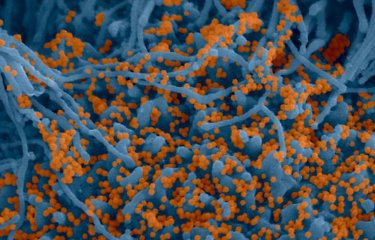-
Fiche maladie | 2015.10.06
Ebola
The Ebola virus causes high fever and bleeding that can often prove fatal. The death rate varies between 30 and 90% depending on the outbreak and virus species. Bats are believed to be the natural reservoir of the Ebola virus. The virus was first discovered in 1976 following outbreaks in Sudan and the Democratic Republic of the Congo. Since then, there have been around 20 outbreaks in Central...
-
Fiche maladie | 2023.11.27
Dengue
Dengue, also known as ‘tropical flu’, is an infectious disease caused by the virus of the same name. The virus is transmitted by mosquitoes of the genus Aedes. The incidence of dengue is rising rapidly and it is currently considered a ‘re-emerging’ disease.
-
Fiche maladie | 2015.10.06
Whooping cough (pertussis)
Whooping cough, long thought of as a childhood illness, can be severe at any age. This bacterial infection is particularly dangerous, and sometimes even fatal, for unvaccinated or partially vaccinated infants and at-risk individuals such as pregnant women and elderly people.
-
Fiche maladie | 2015.10.06
Yellow fever
Yellow fever is a viral disease that was first described in the mid-sixteenth century in Yucatán, Mexico. It is caused by yellow fever virus, an arbovirus (a virus transmitted by an insect vector) isolated in 1927, simultaneously in Ghana and at the Institut Pasteur de Dakar, Senegal. The disease is endemic in Africa and in Central and South America. The case fatality rate is high, fluctuating...
-
Fiche maladie | 2015.10.06
Amebiasis
Amebiasis is one of the most deadly parasitic diseases in the world (after malaria and schistosomiasis). Around 10% of the global population is thought to be infected with parasitic amoebae of the genus Entamoeba, the most pathogenic of which is Entamoeba histolytica, the amebiasis agent. Infection is often asymptomatic but it may result in multiple complications.
-
Fiche maladie | 2015.10.06
Listeriosis
Listeriosis is a severe foodborne infection caused by the bacterium Listeria monocytogenes. It can cause septicemia or central nervous system infections. In pregnant women, it can lead to miscarriage, premature delivery or serious neonatal infection.
-
Fiche maladie | 2016.05.20
HIV / AIDS
Although there have been considerable advances in treatment, HIV continues to be a serious problem, especially in the terminal phase of the disease in the absence of treatment, known as AIDS. HIV/AIDS is currently one of the leading causes of death worldwide for adolescents and women of childbearing age. The interval between infection and diagnosis is long, especially in France, where it can...
-
Fiche maladie | 2015.10.06
Malaria
Malaria is a disease transmitted by parasites of the genus Plasmodium. According to WHO figures, the disease caused 608,000 deaths worldwide in 2022. For several years now, parasites have been developing resistance to antimalarial drugs and mosquitoes are increasingly less susceptible to insecticides.
-
Fiche maladie | 2016.07.08
Staphylococci
Staphylococci are pathogenic bacteria responsible for a broad spectrum of diseases with varying degrees of severity. They are one of the main causes of nosocomial infections (hospital-acquired infections) but can also be acquired outside hospitals. They are part of the natural skin flora, specifically colonizing external mucous membranes, but they are also often found in the environment (in...
-
Fiche maladie | 2015.10.06
Sanfilippo syndrome
Sanfilippo syndrome is a rare and intractable neurological disorder of genetic origin. First manifestations in children are delayed cognitive development and behavioral disturbances, which further progressively evolve towards severe psychomotor retardation and polyhandicap. The disease is responsible for premature death in early adulthood.


